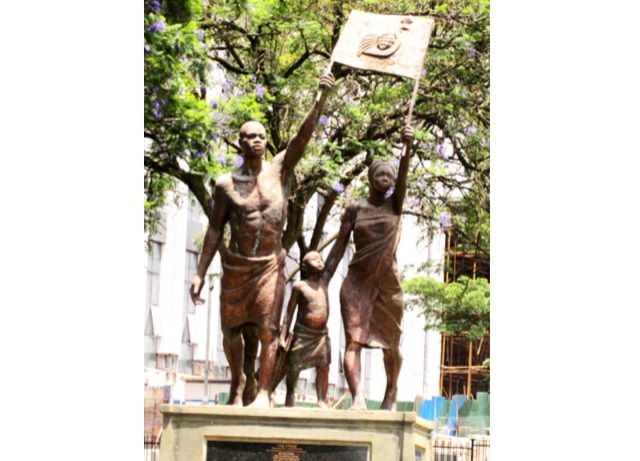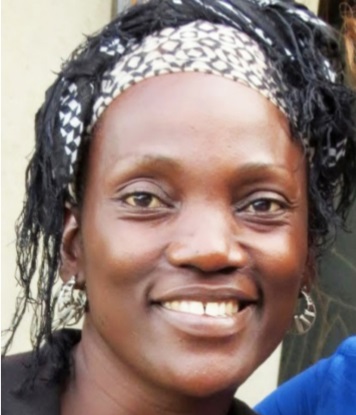
She challenged norms of traditional male-dominated art making
THE INDEPENDENT | DOMINIC MUWANGUZI | Anyone who has seen `The Stride, 2007’, the monument in the space between the parliament building and the Serena International Conference Centre in Kampala city, or the Kabamba Millitary Monument and the `Building the Nation’ monument in Kigali Rwanda notices that they have one aspect in common. They are towering in size, exuding rare studio finesse, and are true works of genius, studio deftness and prowess.
Well, they were all sculpted by Maria Naita, the renowned Ugandan sculptress, on the team. And she passed on recently, on Sept.27, after a long battle with cancer.
Many are mourning her departure but many more are celebrating her legacy. She mentored many apprentices and infused success, victory, and big dreams in those who knew her.
The celebrated artist Taga Nuwagaba was in the same class with Naita at Makerere University where she graduated with a Bachelor’s Degree in Industrial and Fine Art and a Master’s in Industrial and Fine Art (MIFA). Taga once described how he instinctively realised, from the way she handled the clay in the sculpture studio, that Naita was destined to be one of the greats.
 “She would pick a small lump of clay and quickly mold something with utmost ease. At that moment I knew that she truly was destined for a successful art career,” Taga recalls. Taga was not surprised that the ever glowing Naita was popular among her lecturers and fellow students. They became good friends.
“She would pick a small lump of clay and quickly mold something with utmost ease. At that moment I knew that she truly was destined for a successful art career,” Taga recalls. Taga was not surprised that the ever glowing Naita was popular among her lecturers and fellow students. They became good friends.
Naita chose to specialise in sculpture for her Master’s degree and her name soon exuded respect and admiration on the local contemporary art scene as one of the most celebrated women sculptresses of her generation. She defied the traditional norm that women cannot sculpt and built towering figurines from clay, hardwood, fibre glass and brass.
Her choice of career and success as a sculptor inspired many young female artists into the genre. They looked up to her for the magnificent monuments that she built in public spaces locally and beyond.
Yet the most alluring aspect of her almost two decade career is how she made the brave decision to be a full time artist during a period when many female art graduates either chose to teach at university or switched to “formal” careers. It was an act of passion and focus from a very intelligent mind.
Naita could have chosen painting because was equally talented. As a painter she loved to tell stories on social themes, specifically, the family setting. A mother and wife herself, many of her paintings conveyed happy moments in family settings. She painted children playing; a toddler wearing their mommy’s shoes and holding car keys as if going to work. Her women exuded African beauty as she often dressed them in traditional garb of the Ssuka or barkcloth that covered the bosom; a sign of decency and pride. She was a Muganda where beauty of a woman is not physical but moral, reflected in dress and behaviour.
She was a social commentator and her women were artistes playing the flute, fashionistas and mothers; all metaphors of the diverse faces of woman in the community.
Naita showed no fear of crossing the boundaries of conventional norms of art production and yet she created no controversy. She will always be remembered as a great inspiration.
****
 The Independent Uganda: You get the Truth we Pay the Price
The Independent Uganda: You get the Truth we Pay the Price



Could I or someone please allow these photos to be used in the Wikipedia article for Maria Naita?